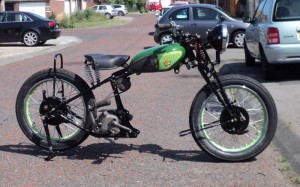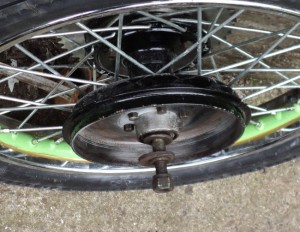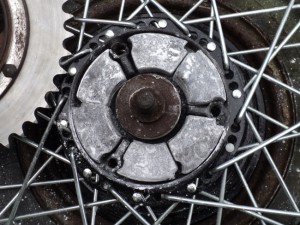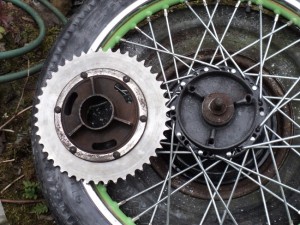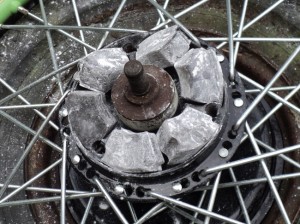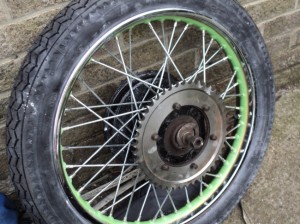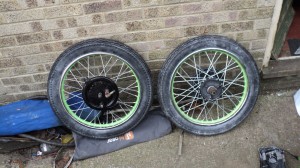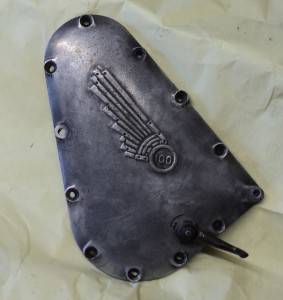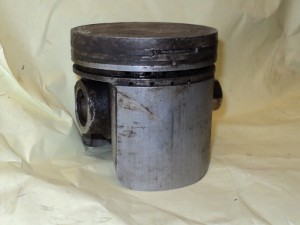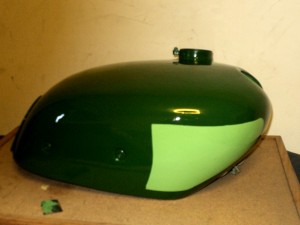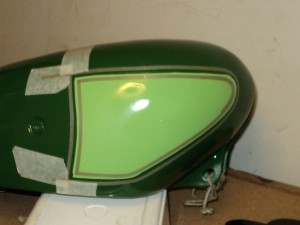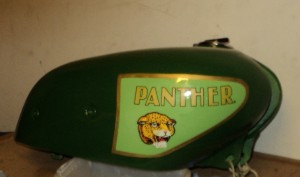As I have the bike up on its wheels now it’s time to start getting some of the tinware sorted.
First one is the front mudguard so fetch it from the cupboard and take it out to the garage.
It’s offered up and becomes immediately obvious that the front wheel has to come out, so it’s a case of lift the front end of the bike up onto the front stand and drop the wheel out.
The guard mounts onto a lug under the lower yoke of the main girder of the fork, I try mount the guard with a 1/4 bolt and promptly realise that it needs a 5/16 so it’s go and get the other bolts and realise that I’ve only a limited supply of 5/16.
Anyway there’s one that’s right for the bridge mount so I go to fit it.
It won’t go in!. Turns out that both the lugs on the mudguard and on the fork are clogged with paint so remove that and the mudguard is mounted onto thefront fork for the first time in over 20 years.
The front stays are bolted in place after running a tap through the fork mounts but when I go to attach the front stand it does not align with the brackets on the guard, I think that over the years it was unmounted the guard has relaxed a bit and is now a greater radius than it was originally.
I now have 2 options, either make up new, longer mounts or try to strain the guard back into the original curve, I suspect that the first course will be the easier.
Before doing that though we’ll get the back mudguard fitted.
This offers up into place easily, then I realise that I can’t get my fingers between the tyre and the guard to fit the nuts in place.
So now it’s the back wheel that has to come out!
Turns out that this guard has relaxed a bit as well!
However I bolt the front lower mount in place and then the rear stays-come-grab handle.
This leaves the centre mount, onto the seat bracket, about an inch clear of the guard.
I grab hold of the grab handle and pull it towards the front of the bike and the guard and the seat bracket promptly align.
A webbing strap was then put between the grab handle and the main frame and used to strain the guard into place and the seat bracket/mudguard bolt fitted.
Last thing for the day was to fit the stand spring so the lower end was hooked onto the stand leg a cord fixed round the upper one and it was stretched into place.
One of the Murphy Laws now came into force because as soon as I took the bike of its stand I realised from the way that it fouled the frame that I had fitted the spring upside-down.
So, back up onto the stand, remove the spring and reverse it.
Easier to say than to do! and this time the spring was clear!

